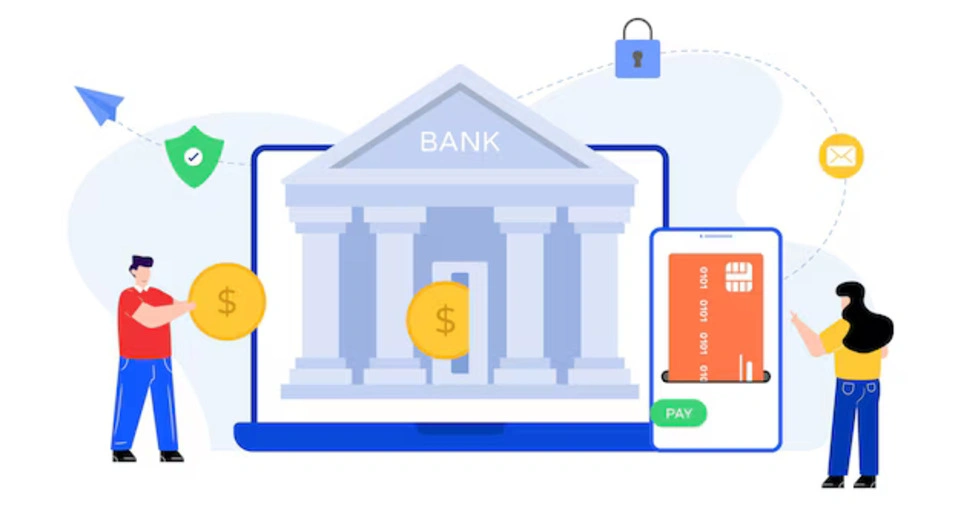Choosing the right bank is one of the most critical financial decisions you will make. Your choice of a bank will affect how you manage your money, the fees you pay, and the financial services available to you.
Whether you are looking for a bank to handle your daily transactions, grow your savings, or finance a business, selecting the right institution is crucial.
With numerous banking options available, including traditional banks, online banks, credit unions, and neobanks, it can be overwhelming to decide which one suits your financial goals best.
A good bank should offer competitive interest rates, minimal fees, robust online banking features, excellent customer service, and strong security measures.
This guide will walk you through everything you need to consider when selecting a bank, from evaluating your banking needs to understanding different banking options.
By the end of this article, you will be well-equipped to choose the best bank that aligns with your financial needs and goals.
Step By Step Guide to Choose the Best Bank for Your Financial Needs

Step 1: Determine Your Banking Needs
Why Identifying Your Banking Needs is Important
Before selecting a bank, you must first understand what you need from it. Each individual has different financial priorities, so the best bank for you may not be the best for someone else.
The type of bank you choose should align with your financial goals, lifestyle, and spending habits. Below are some key factors to consider when determining your banking needs:
Common Banking Needs
- Everyday Banking – If your primary need is for everyday transactions, such as depositing paychecks, paying bills, and transferring money, you should look for a bank that offers free checking accounts, easy ATM access, and mobile banking services.
- Savings Goals – If your primary goal is to grow your savings, you should focus on banks that offer high-interest savings accounts, certificates of deposit (CDs), or money market accounts.
- Business Banking – If you run a business, you’ll need a bank that offers business accounts, merchant services, payroll processing, and business loans.
- Credit and Loan Needs – If you plan to apply for a mortgage, personal loan, or auto loan, you should choose a bank that offers competitive interest rates and flexible loan terms.
- Investment and Retirement Planning – If you’re interested in wealth management, look for a bank that provides investment accounts, financial advisory services, and retirement planning options.
- Student Banking – If you are a student, some banks offer special student checking accounts with no maintenance fees and exclusive benefits.
- International Banking – If you frequently travel abroad, you might want to choose a bank that offers low foreign transaction fees and international banking support.
Step 2: Compare Different Types of Banks
Traditional Banks
Traditional banks have physical branches, allowing customers to perform in-person transactions.
They offer a wide range of services, including checking and savings accounts, loans, credit cards, and investment options.
While they provide face-to-face customer service, they often charge higher fees and offer lower interest rates compared to online banks.
Online Banks
Online banks operate entirely on the internet, offering banking services through websites and mobile apps.
These banks typically have lower operating costs, allowing them to offer higher interest rates on savings accounts and lower fees.
However, they may lack physical branch access and have limited customer service options.
Credit Unions
Credit unions are member-owned financial institutions that offer similar services as banks but with lower fees and better customer service.
Since they are nonprofit organizations, their focus is on providing benefits to members rather than maximizing profits.
Neobanks
Neobanks are digital-only financial institutions that focus on technology-driven banking solutions.
They often provide innovative features like automated budgeting tools and cryptocurrency support. However, their services can be limited compared to traditional banks.
Community Banks
Community banks are smaller, local banks that focus on providing personalized service and supporting local economies. They may offer lower fees and more flexible loan terms compared to large banks.
Step 3: Consider Banking Fees and Charges
Common Fees to Watch Out For
Many banks charge fees for account maintenance, overdrafts, ATM usage, and wire transfers.
Understanding these fees will help you choose a bank that minimizes unnecessary charges.
- Monthly Maintenance Fees – Some banks charge a monthly fee for checking or savings accounts. Look for banks that waive these fees if you meet certain conditions, such as maintaining a minimum balance.
- ATM Fees – Banks may charge fees if you use an out-of-network ATM. Choose a bank with a broad ATM network or reimbursement policies.
- Overdraft Fees – Some banks charge hefty fees if you overdraw your account. Look for banks that offer overdraft protection services.
- Wire Transfer Fees – If you frequently transfer money, check the wire transfer fees. Some banks charge high fees for domestic and international transfers.
- Foreign Transaction Fees – If you travel frequently, look for banks that do not charge foreign transaction fees on debit or credit card purchases abroad.
- Minimum Balance Fees – Some banks require you to maintain a minimum balance to avoid monthly fees.
- Dormancy Fees – If you don’t use your account for a certain period, some banks charge an inactivity fee.
Step 4: Look for Competitive Interest Rates
The interest rates offered by banks can significantly impact your savings and borrowing costs.
When choosing a bank, compare the interest rates on:
- Savings Accounts – Online banks often provide higher interest rates than traditional banks.
- Certificates of Deposit (CDs) – CDs can offer higher interest rates for fixed-term deposits.
- Loans and Credit Cards – Choose a bank that offers low interest rates on mortgages, personal loans, and credit cards.
- Money Market Accounts – These accounts typically offer higher interest rates than regular savings accounts while providing liquidity.
Step 5: Evaluate Online and Mobile Banking Features
With the rise of digital banking, it’s essential to choose a bank that offers convenient online and mobile banking services.
Look for:
- A user-friendly mobile app
- Online bill payment
- Mobile check deposit
- Secure account management
- Two-factor authentication for security
- Real-time transaction alerts
Step 6: Consider Customer Service and Accessibility
Good customer service is essential for resolving banking issues quickly.
Look for banks that offer:
- 24/7 customer support
- Live chat and phone support
- Multiple branches and ATMs
- Multilingual support for international customers
Step 7: Check for Additional Financial Services
Some banks offer extra services such as:
- Auto loans and mortgages
- Investment and retirement planning
- Financial advisory services
- Insurance products
Step 8: Read Customer Reviews and Ratings
Before finalizing a bank, read online reviews and ratings to see what other customers say about its service quality, fees, and policies.
Step 9: Ensure Security and Fraud Protection
Security is a top priority when choosing a bank.
Ensure the bank provides:
- FDIC or NCUA insurance for deposit protection
- Fraud alerts and account monitoring
- Strong encryption for online transactions
- Biometric authentication for mobile banking
Step 10: Take Advantage of Promotions and Bonuses
Many banks offer bonuses for opening an account.
Look for promotional offers such as:
- Cash bonuses for new customers
- Waived fees for the first few months
- Reward programs for debit or credit card usage
ALSO READ:
Conclusion
Choosing the right bank requires careful consideration of your financial goals, banking habits, and service preferences.
By comparing options based on fees, interest rates, customer service, and security, you can find a bank that aligns with your needs.







